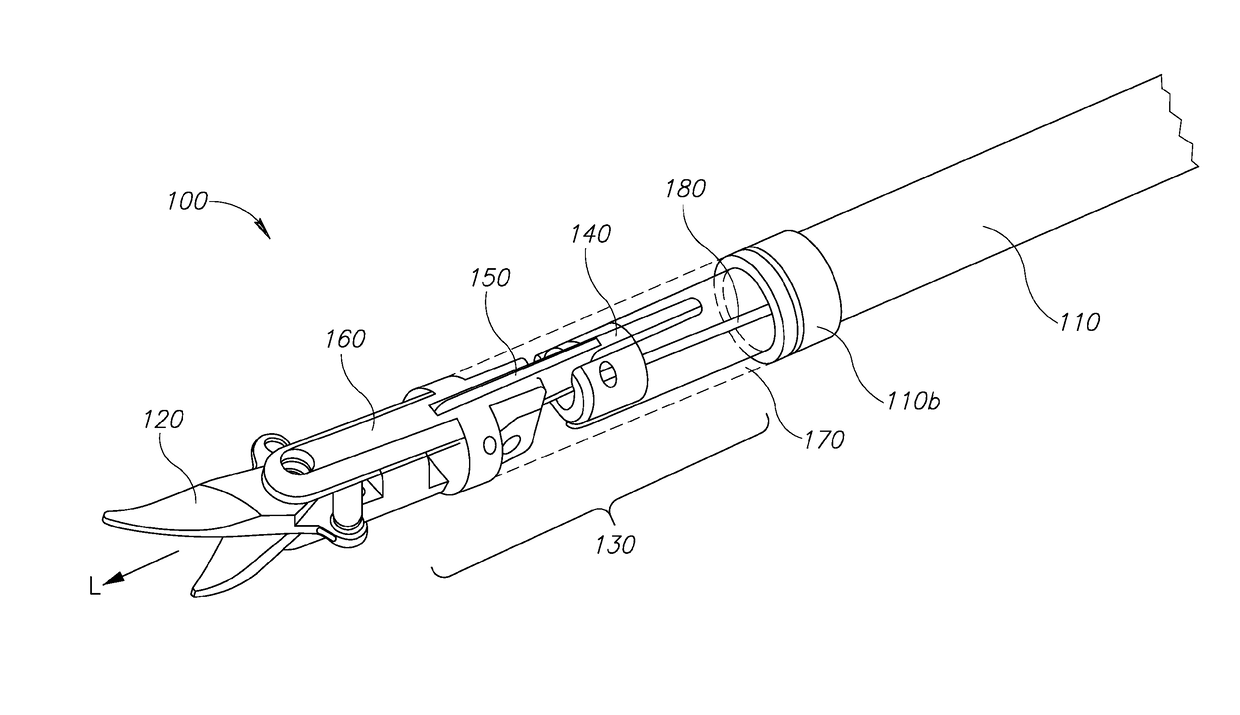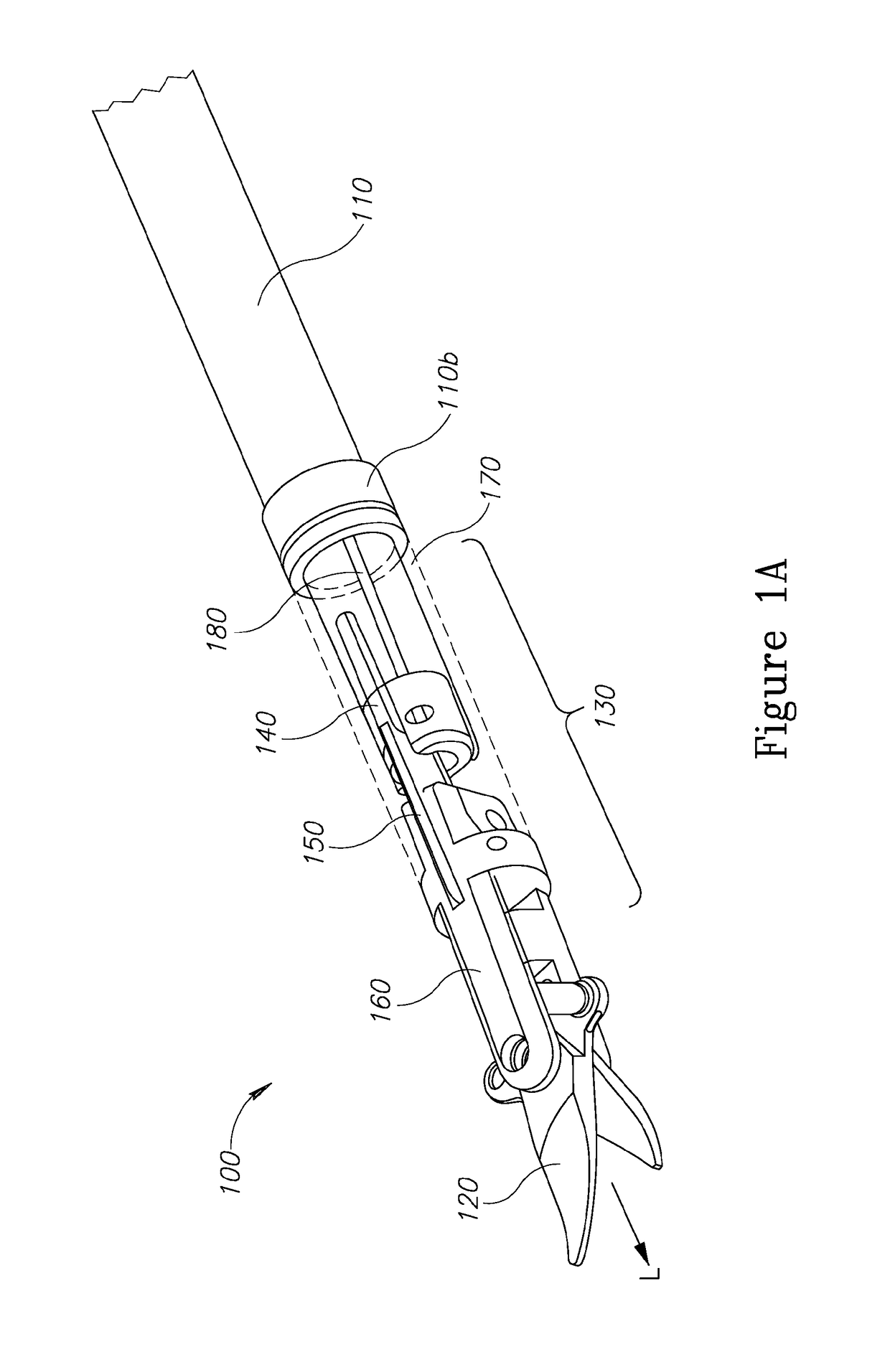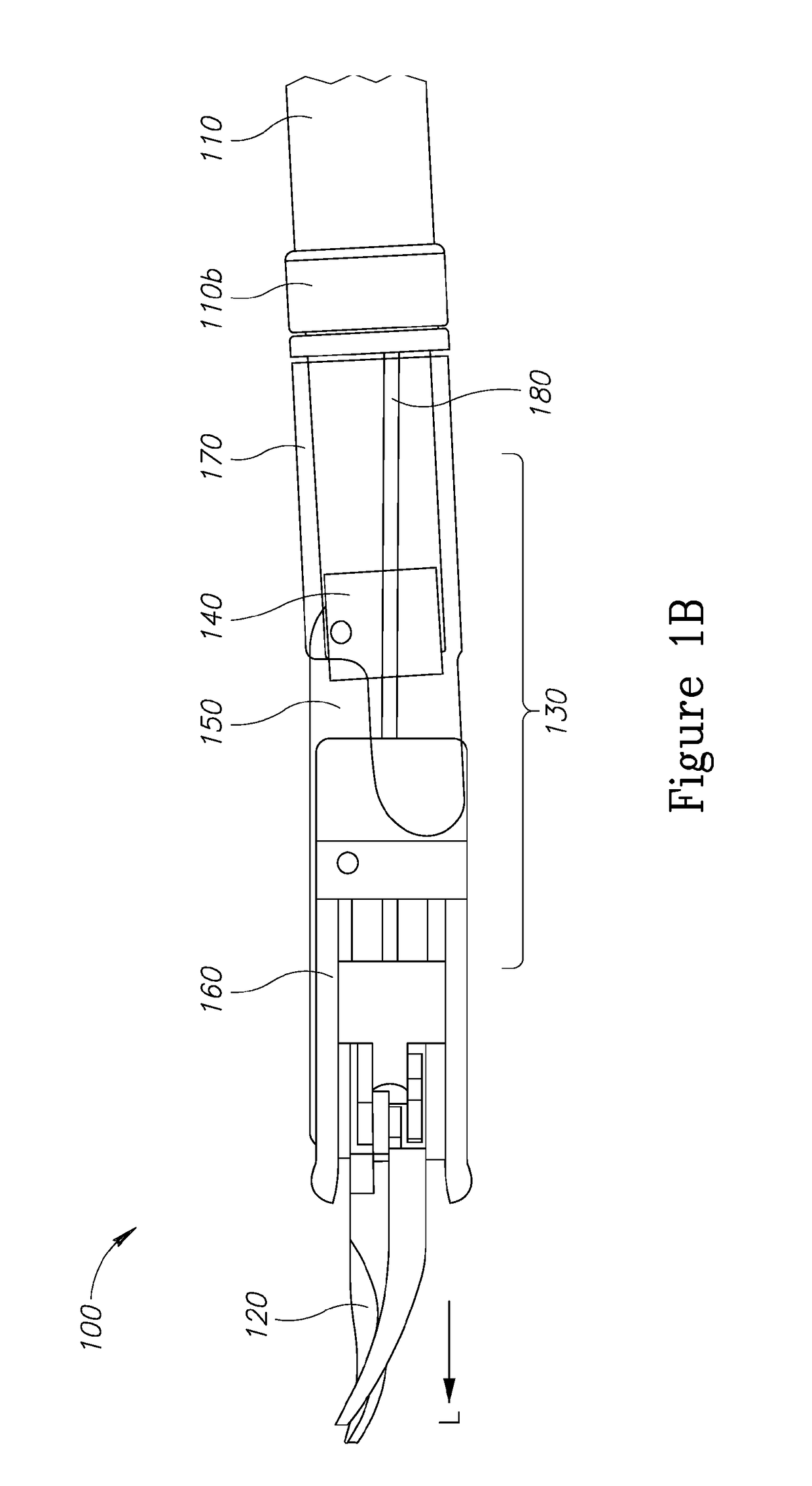Flexible articulated device
- Summary
- Abstract
- Description
- Claims
- Application Information
AI Technical Summary
Benefits of technology
Problems solved by technology
Method used
Image
Examples
Embodiment Construction
[0005]It is an object of the present invention to provide a surgical device comprising a three-bar-linkage retraction mechanism, said mechanism comprises a distal element 160, link 150 and a flexible elongated (endless) shaft 110 provided proximally to the three link bar, wherein the link is interconnected to the shaft, by mean of a rigid clevis 140, which is configured to enable simultaneously three degrees of freedom namely rotation, actuation and articulation.
[0006]It is a further object of the present invention to provide the aforementioned device wherein the rigid clevis is provided with a guide 172 configured for guiding the actuator wire 180. Furthermore, the guide 172 is configured by having at least a section of a concaved-parabolic nozzle-like shape, configured for guidance of the wire and fixture at the nozzles throat 175.1.
[0007]It is another object of the present invention to provide the aforementioned device wherein the rigid clevis is provided with a guide 172 configu...
PUM
 Login to View More
Login to View More Abstract
Description
Claims
Application Information
 Login to View More
Login to View More - R&D
- Intellectual Property
- Life Sciences
- Materials
- Tech Scout
- Unparalleled Data Quality
- Higher Quality Content
- 60% Fewer Hallucinations
Browse by: Latest US Patents, China's latest patents, Technical Efficacy Thesaurus, Application Domain, Technology Topic, Popular Technical Reports.
© 2025 PatSnap. All rights reserved.Legal|Privacy policy|Modern Slavery Act Transparency Statement|Sitemap|About US| Contact US: help@patsnap.com



